Review for Princess Jellyfish - Complete Series Limited Edition (BD/DVD)
Introduction
Let’s try this again. I reviewed Princess Jellyfish for this site 18 months ago, and much as I loved the series, Kazé Entertainment’s UK release of the show was a total piece of... When you get to a point in a review where you’re reviewing the distribution company more than the actual show, you should just put it to one side and do something else instead. Unfortunately that’s a luxury I rarely have, and I had to put up with the poor authoring, limited extras and above all the horrendous subtitling all the way through to the end. I made a point to import the series as soon as an Australian release became available. The US release was and is a Blu-ray DVD combo, with the Blu-ray locked out of my player’s reach to Region A. But when that Australian release did eventually happen courtesy of Siren Visual, the PAL discs might have had the correct subtitles, but it didn’t get all of the extra features, and it still retailed for a price close to the US release. So in the end, I wound up getting the US release anyway, flawless subtitles, all of the extras, and superfluous Blu-ray discs as well (until I get that multi-region player). This time I get to review the show, not the distributor; this time I can watch the show without bitching and whining. As I can’t yet spin Region A Blu-rays, this is the review of the DVD component of the release.
Princess Jellyfish is about otaku, female otaku. Indeed women can be just as obsessive about trivial passions as men, can be just as fervent when it comes to collecting, and just as withdrawn and unable to engage with society. Tsukimi was told by her mother that she would grow up to be a princess, but instead she grew up to be a freak. She obsesses about jellyfish, the same jellyfish that she used to see when her mother took her to an aquarium, and while she moved to Tokyo to work as an illustrator, she spends most of her unemployed free time illustrating jellyfish. She lives in the ‘Nunnery’, the Amamizu-kan apartment block with a group of similarly isolated women, and they call themselves the Sisterhood. The apartment block is run by Chieko, who has a passion for dolls and traditional clothing. Mayaya is a tall brash girl who spends her time in a tracksuit obsessing about the Romance of the Three Kingdoms. Banba is a short girl hidden beneath an excessive afro who loves trains, and Jiji is a shy, mousy girl who likes movies and especially older men. Hidden away behind locked doors is the never seen, nocturnal Ms Mejiro, who as a mangaka specialising in boys’ love stories, is the only really productive member of the group.
The Sisterhood have a hard time fitting into society, shy away from the more attractive and outgoing people and have one rule for their lifestyle... No men allowed. Then one day Tsukimi pays a visit to the local aquarium to see her favourite jellyfish Clara, only to find they have put another jellyfish in the tank, a different species that will prove inimical to Clara. She’d point that out to the owner of the shop, but the guy behind the counter is too cute to talk too. Flustered and unable to communicate, she’s about to be in the middle of a regrettable scene, when a princess comes to her rescue. A beautiful girl, the sort of beauty that the Sisterhood shy away from and shun, rescues her, and saves Clara as well. Only this princess is pushy enough to invite herself over, and what’s more spend the night. The kind of girl that can petrify a female otaku is bad enough, but with the next morning comes a greater shock. The princess is actually a prince. Kuranosuke loves to cross dress, and Tsukimi has just broken the Sisterhood’s cardinal rule...
Eleven episodes of Princess Jellyfish are presented across two Region A locked Blu-ray discs, and two Region 1 locked dual-layer DVDs. The episodes are distributed across the DVDs as follows...
Disc 1
1. Sex and the Sisterhood
2. Sukiyaki Western Matsusaka
3. Enchanted
4. I’ll See You In My Aquarium
5. I Want to Be a Jellyfish
6. Night of the Living Sisterhood
7. Jubaku – Spellbound and Stone Broke
Disc 2
8. Million Dollar Babies
9. Midnight Pureboy
10. Days of Love and Lukewarm Water
11. Jellyfish of Dreams
Picture
Princess Jellyfish on the US DVD looks pretty good. It’s lower resolution than PAL of course, at 480 lines instead of 576, but the Funimation release makes up for it with a genuine progressive transfer. It’s smooth enough on regular equipment, but if you have the compatible kit, it looks even better when played back progressively at 24 frames per second. The image is clear and sharp throughout, and the colours and bold imagery comes across well.
Princess Jellyfish has something of a unique look to it when it comes to its visual style. Recognisably anime, it still eschews the usual character design ethic when it comes to its main characters, its colour palette is a little more selective, going for the gentler shades, and there is a stylised two-dimensional feel to the animation that gives it a rather more comic book feel, with bolder outlines and solid blocks of colour. Against that is a greater degree of freedom and energy in the animation itself, which is actually livelier than the usual anime. While the show concentrates mostly on the comedy of the situation, and the parody of its otaku caricatures, it can also find moments of depth and magic which transcend its design style.
The images used in this review are captured from the DVD component of the release.
Sound
You get the choice between Dolby Digital 5.1 Surround English (a step up over Kazé’s 2.0 Surround) and DD 2.0 Stereo Japanese, with optional translated subtitles and a signs only track. I get the feeling that the Funimation release has a different subtitle translation than the UK release, certainly it feels smoother and more natural, although it may be down to the fact that I had no issues with subtitles this time around, requiring me to pause and change tracks, and skip back and forth through episodes to find out what was being said. With the Japanese audio, all of the dialogue is subtitled, and all of the screen captions translated, which is just as it should be. Also, on the DVD, the subtitles and audio options aren’t locked (although apparently this isn’t the case for the Blu-ray). I was happy enough with the Japanese audio, and the dialogue was clear throughout, the subtitles timed accurately and free of typographical error.
I also gave the English dub a try, and Funimation have created quite a pleasing 5.1 mix for a show which is dialogue focused. There is still discreet placement of effects when required and directionality of audio, although mostly the surround is devoted to the show’s music. Princess Jellyfish certainly gets some memorable theme songs, but the incidental music is also eclectic and quirky, suiting the tone of the show well, while making it stand out as something special. On the second time of trying, I found the dub pretty good, and it is one of Funimation’s better efforts. Incidentally, the theme songs have translated and romanji subtitles on the US release. It’s worth mentioning that disc 2 has an awkwardly placed layer change, right in the middle of a music cue.
Extras
I got the Limited Edition of Princess Jellyfish, and that comes in an attractive chipboard artbox, sturdy, and covered with some great character artwork. It holds two US style, thin Blu-ray cases. They’re the disappointing eco-cases with holes cut into them to save on plastic, but the artbox makes up for their flimsiness. The case sleeves get some attractive artwork as well, while the inside of the sleeve has different artwork plus the discs’ contents. One case holds the Blu-ray discs, the other the DVDs.
DVD Disc one autoplays with a trailer for Okami-san and her Seven Companions, and then boots to a static menu screen. That’s simple enough, but I did find that the highlighted option was of too similar a shade to the other options. The disc also displays a jacket picture when it isn’t spinning.
Disc one’s sole extra is an audio commentary on episode one, with ADR director, and voice of Hanamori, Chris Bevins, Maxey Whitehead (Tsukimi), and Josh Grelle (Kuranosuke). It’s basically a twenty-five minute love-fest for the show, and who can blame them?
After a trailer for Fairy Tail: Part 4 and booting to the static menu, it transpires that Disc 2 is veritably packed with extras, beginning with an audio commentary on episode 11. In it Chris Bevins is this time joined by the rest of the Sisterhood, Cynthia Kranz (Chieko), Monica Rial (Mayaya), Leah Clark (Jiji), and Mariela Ortiz (Banba). It’s another easy commentary to listen to, and even a little informative at times.
You do also get the bonus animations that were on the Kazé release, with the Princess Jellyfish Heroes offering more of the colourful supporting cast of the show, in four bonus animations running to a total of 22½ minutes.
The Go, Sisterhood Explorers are shorter bits of whimsy that are six 30-second animations running to a total of 3 minutes.
Exclusive to the Funimation release in English speaking territories is the Tsukimi and Jiji’s Jellyfish Tour, which runs to 21½ minutes, and sees the voice actresses behind Tsukimi and Jiji, Kana Hanazawa and Mamiko Noto pay a visit to the Enoshima Aquarium to see some of the jellyfish referenced in the show, in the real world. You’ll have to supply your own David Attenborough impersonation to get the wildlife footage looking authentic.
The Princess Jellyfish Field Guide is another Funimation exclusive, which offers a text based exploration of the show and of jellyfish, offering a look at the various strange fauna that inhabit the show in both marine and otaku form.
To round off the release, you get 30 seconds of promos for the show, the US Trailer, the Textless Credit sequences (here much appreciated), and trailers for other Funimation releases including Black Butler, One Piece, Romeo x Juliet, Hetalia World Series, .hack//Quantum, Sengoku Basara, and Birdy the Mighty Decode.
Conclusion
Just perfect! Well nothing’s perfect, but in comparison to that UK release, even the tiny flaws on this Funimation release of Princess Jellyfish are wholly forgivable. The subtitles are spot on, the on screen text is subtitled as the show needs it to be, and the subtitle script on the Funimation release flows so much better. There were a dozen jokes that I caught this time around that I missed completely the first time I watched the show. And it is so much fun. Ever episode is brilliantly constructed, and makes wonderful use of the characters, the interplay is astounding, and every moment is a delight. And it’s about as non-anime an anime as you can imagine. That’s no surprise with it being a noitaminA show, that strand designed to cater for audiences outside the usual bracket. It’s about a group of girls, who are obsessive otaku. They aren’t perfectly made up, they aren’t endowed with fantasy boobs, and they aren’t all lusting after the same hapless male. There are none of the usual clichés associated with anime, none of the storytelling short cuts, and the subject matter is so far outside the mainstream anime comfort zone that it would be easy to dismiss the show. I mean, the main male character cross-dresses (but isn’t gay, or camp), and he looks better as a girl than the female characters?
The residents of Amamizu-kan are obsessive certainly, fervent collectors, and detached from society, but they are harmless, and more importantly, they do no harm to themselves, and most importantly of all, have a sense of community, warmth, and friendship among themselves. The comedy comes from seeing them confronted with society, and unable to handle it, retreating to what they know best. But what makes Princess Jellyfish greater than this, and makes it a richer experience than shows like Genshiken or Welcome to the NHK, is that it isn’t just about the otaku. It’s also about the other side of society, the Stylish that are liable to petrify any of the Sisterhood on sight. The cool, smart-set of society abound, and Kuranosuke at first glance appears to be their epitome. She’s beautiful, elegant, immaculately dressed and made-up, but she interacts with Tsukimi, which blows Tsukimi’s theories of Sisterhood and Stylish segregation out of the water. It only gets more complicated when it turns out that Kuranosuke is a man.
We get politics thrown in as well. Kuranosuke comes from one of Japan’s most prominent political dynasties (his uncle is Prime Minister), while he is a product of his father’s indiscretion. Were he not a boy, he would have stayed with and been raised by his mother, but as a boy he’s a potential successor to the family name, even though his older half-brother Shu is on the fast track to political service. Kuranosuke doesn’t want to be a politician, which is why he cross-dresses. He loves fashion and make-up anyway, and if it can get him out of his father’s sights, he’ll do it. Not exactly conventional himself, he eschews the shallow friendship of his peers, only to be ensnared by this passionate, obsessed, and introverted girl he meets one night outside the aquarium. And soon it isn’t just Tsukimi that obsesses him, he also finds much to appreciate about her friends, even though they are petrified at his presence, and he has to conceal the truth about his gender from them.
On top of that, Princess Jellyfish is a love story, with Tsukimi’s childhood dream of becoming a princess at the heart of it. She’s taken with Kuranosuke’s brother Shu, although he sees nothing but the otaku. That’s until Kuranosuke indulges his obsession for fashion, and gives everyone at Amamizu-kan, including Tsukimi a make-over. From that point, Shu becomes smitten with After-Tsukimi, although he thinks she’s a totally different person from the normal Tsukimi. Tsukimi’s self-confidence isn’t high at the best of times, and this doesn’t help any. To make matters more complicated, Kuranosuke starts developing feelings for Tsukimi himself.
And there’s more. It turns out that the whole area is being redeveloped into a hotel, and Amamizu-kan is top of the demolition list, with Chieko’s mother being pressured to sell. Now the residents have to save their home as well, and for otaku to get motivated, and more importantly involved is not an easy thing. It falls to Kuranosuke to come up with a plan. The developer turns out to be an unprincipled woman named Inari, and when she learns that Shu is a scion of a political dynasty, she’ll get him by hook or by crook, which only makes things harder for Tsukimi, who’s quick to jump to self-defeating conclusions at the best of times.
This could so easily have been live action. I could see it as one of the more esoteric sitcoms that get shunted away on BBC3, or late night Channel 4, or an indie movie comedy. But, Princess Jellyfish is an anime, although it’s unlike any other anime. In fact it’s the perfect show to get for someone who isn’t an anime fan. It’s funny, it’s heart-warming, and it’s just perfectly pitched. It’s the kind of show that will be watched again and again. The one problem you might have is if they ask for more, as there’s really nothing else out there like it. The only thing wrong with Princess Jellyfish is that they didn’t animate any more of the story, as while this series stops at an appropriate climax in its narrative, there is more story to tell.
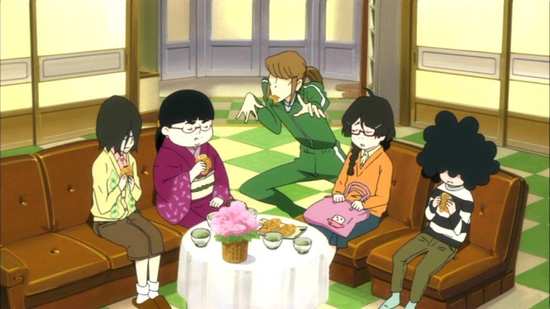
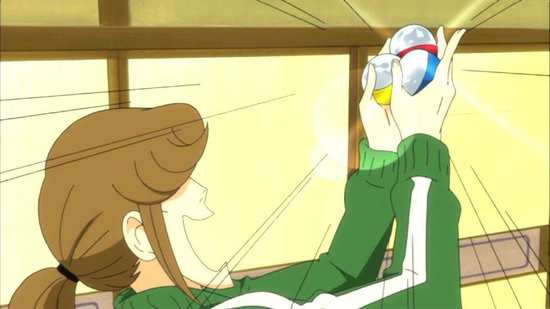
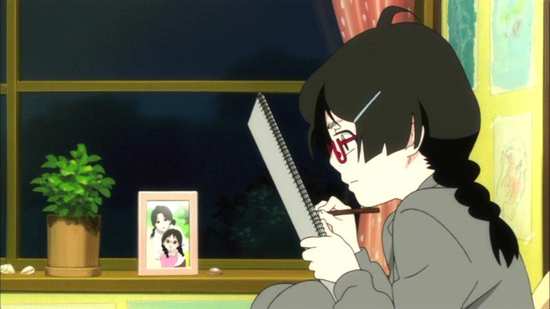
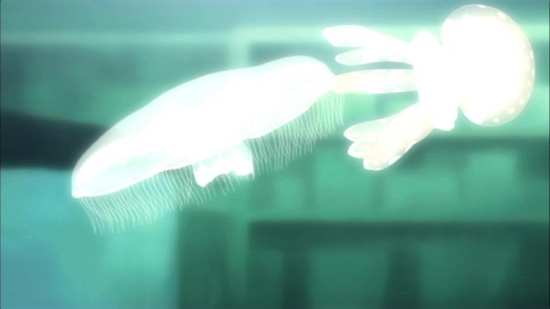
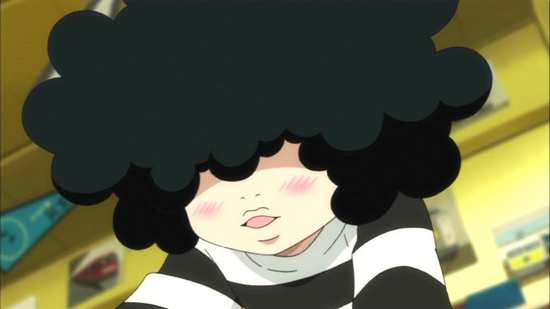
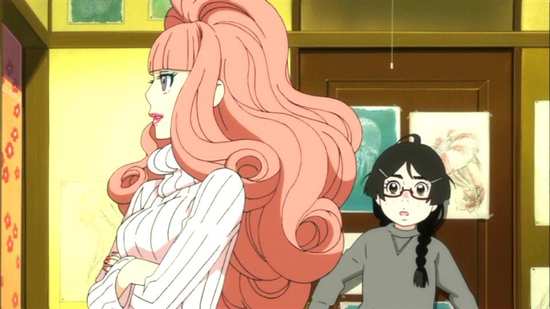
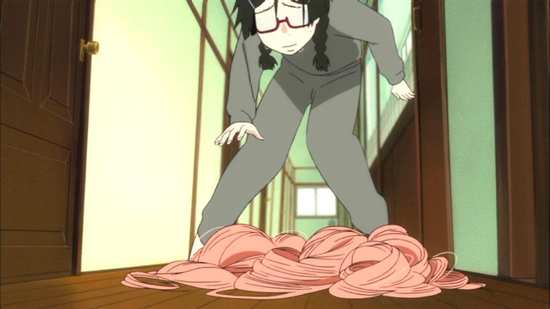
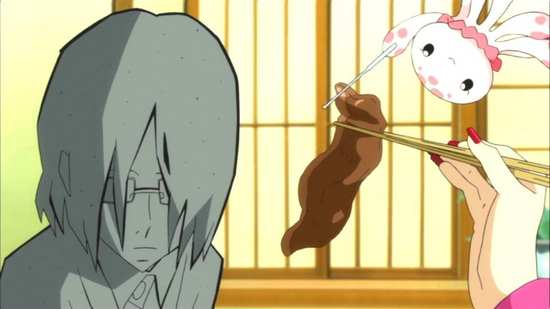

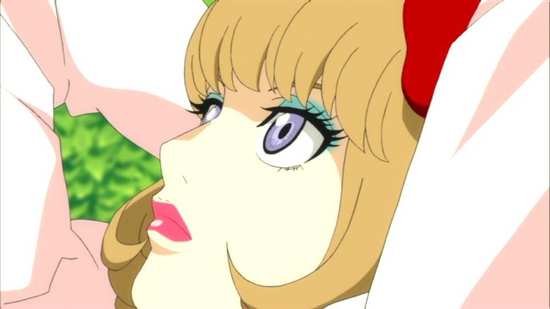
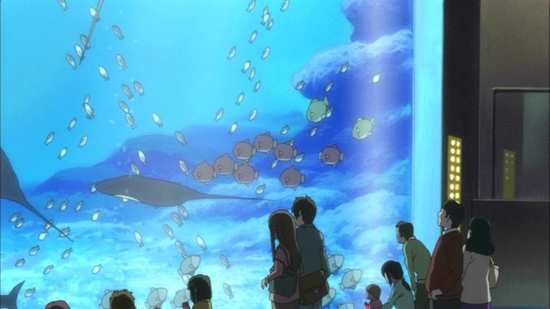
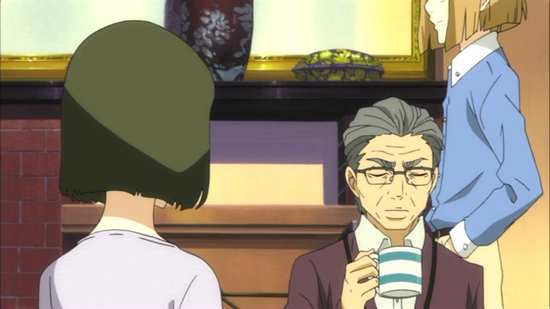
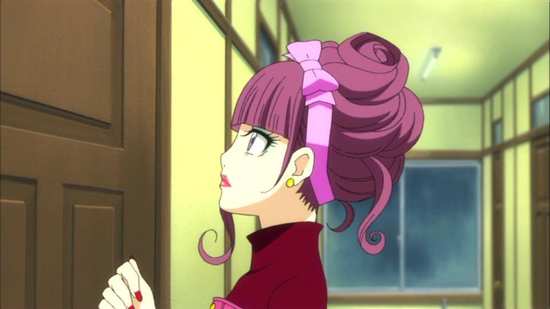
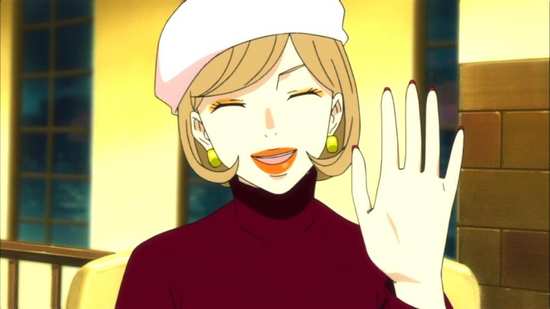

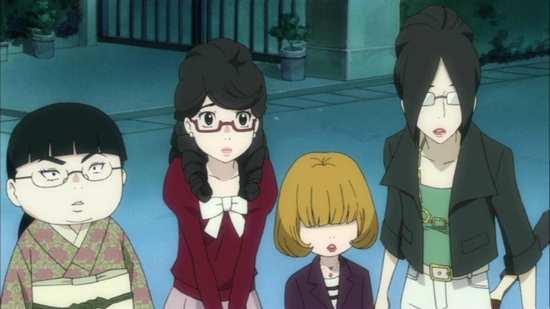
Your Opinions and Comments
Be the first to post a comment!